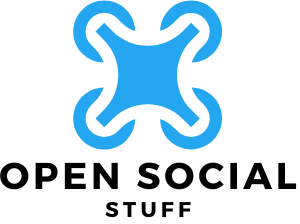In the fast-paced world of data science, choosing the right programming language can feel like picking the perfect avocado—too ripe and it’s mushy, too hard and it’s just sad. With a plethora of options available, it’s crucial to know which languages can turn your data into gold. Whether you’re wrangling big data or crafting machine learning models, the right language can make all the difference.
From the ever-popular Python, known for its readability and versatility, to R, the go-to for statistical analysis, each language has its quirks and charms. So, buckle up and prepare to dive into the vibrant world of programming languages that can supercharge your data science journey. Who knew coding could be this much fun?
Table of Contents
ToggleOverview of Programming Languages for Data Science
Selecting a programming language in data science significantly impacts project outcomes. Python ranks high due to its readability and extensive libraries. Whether developers need data analysis or machine learning, Python provides tools like Pandas and Scikit-learn.
R stands out for its statistical capabilities. Analysts often prefer R for its rich ecosystem of packages tailored for statistical modeling. Packages like ggplot2 and dplyr enable seamless data visualization and manipulation.
Julia is gaining traction for its performance advantages. Computational tasks benefit from Julia’s speed and efficiency. Data scientists exploring large datasets often choose Julia for its ability to execute complex algorithms swiftly.
SQL plays a pivotal role in handling databases. Structured Query Language, or SQL, facilitates data retrieval and management. Analysts utilize SQL for querying datasets stored in relational databases.
SAS remains prevalent in enterprise environments. Businesses frequently depend on SAS for advanced analytics. Its robust capabilities for predictive analytics make it a standard choice in industries requiring data-driven decisions.
Java and Scala are essential for big data technologies. These languages power frameworks like Apache Hadoop and Apache Spark. Professionals focusing on large-scale data processing often find Java and Scala invaluable.
Each programming language possesses unique strengths. Data scientists often blend multiple languages to tackle various challenges. The choice ultimately depends on the specific project requirements and team proficiency.
Popular Programming Languages
Data scientists frequently choose specific programming languages based on project needs. Each language presents unique strengths that can enhance data analysis and modeling.
Python
Python ranks as a top choice due to its readability and versatility. Developers use extensive libraries like Pandas for data manipulation and Scikit-learn for machine learning tasks. Community support remains strong, fostering continuous improvement and growth. Its ability to integrate with other technologies makes Python ideal for various data science projects. As a result, many professionals in the field prefer this language for both beginner and advanced applications.
R
R stands out for its statistical analysis capabilities, making it essential for data scientists. Its rich ecosystem includes packages like ggplot2 for data visualization and dplyr for data manipulation. Users appreciate how R excels in handling complex statistical models and analyses, providing an edge in research and data-driven decision-making. Academic institutions often prioritize R in their curricula, reinforcing its reputation within the data science community. Furthermore, its active user community offers valuable resources for problem-solving and skill development.
SQL
SQL remains crucial for managing databases and querying data efficiently. This language is indispensable for extracting information from relational databases. Data scientists rely on SQL to perform data retrieval tasks and ensure data integrity. Its structured query capabilities simplify complex data operations. In enterprise settings, SQL’s importance grows as organizations rely on large volumes of data that require effective management and analysis. This widespread use confirms SQL’s critical role in a data scientist’s toolbox.
Emerging Technologies in Data Science
Data science continuously evolves, and new programming languages have emerged to address specific needs in the industry. Languages like Julia and Scala bring unique advantages to the field, appealing to diverse data science tasks.
Julia
Julia stands out for its high performance, particularly in numerical and scientific computing. This language allows data scientists to execute complex algorithms quickly, making it ideal for projects involving large datasets. Developers appreciate Julia’s easy syntax, which resembles Python’s, enabling a smooth learning curve. The language boasts strong community support, providing numerous libraries such as DataFrames.jl and Flux.jl for data analysis and machine learning. Additionally, its ability to call C and Fortran libraries directly enhances interoperability with existing systems, broadening its application range in data science scenarios.
Scala
Scala excels in processing big data and integrates seamlessly with Apache Spark. Data scientists favor this language for its functional programming capabilities, enabling concise and expressive code. This reduces the risk of bugs and enhances overall productivity. Scala’s robust type system improves code reliability, which is particularly valuable in enterprise settings. Libraries like Breeze assist with numerical processing, further supporting data analysis. Moreover, its compatibility with Java allows easy access to a vast ecosystem of existing tools and frameworks, making Scala a strategic choice for projects focused on big data technologies.
Comparison of Programming Languages
The choice of programming language directly influences data science success. Evaluating factors like ease of use, performance, and community support helps in making informed decisions.
Ease of Use
Python ranks high for ease of use due to its clear syntax and readable code. Beginners often find it accessible, allowing for quick learning curves. R, while slightly more complex, shines in statistical analysis with functions that cater to advanced users. Julia’s straightforward syntax promotes rapid development, attracting users who prioritize speed in coding. SQL operates on a different level, focusing on database queries. Its structured approach simplifies data retrieval, making it essential for managing large datasets.
Performance
Performance varies among languages. Python excels in handling smaller datasets efficiently but may lag with larger ones. R performs exceptionally well in statistical computations but isn’t as fast in general programming tasks. Julia stands out in executing high-performance numerical tasks, particularly in scientific computing. Its speed advantages become clear with large data operations. SQL, on the other hand, remains unrivaled in database management, optimizing data querying for better performance in enterprise environments.
Community Support
Community support plays a critical role in language selection. Python boasts a vast community, contributing extensive libraries and resources. Developers benefit from a wealth of tutorials, forums, and documentation. R is likewise strong, particularly in academic circles, offering specialized packages for statistical analysis. Julia’s community is growing steadily, with active contributions focused on improving performance and usability. SQL maintains robust support through extensive documentation and community forums, making troubleshooting more manageable. Each language’s community impacts how easily developers can find solutions and enhance their coding skills.
Choosing the right programming language is crucial for success in data science. With each language offering unique advantages data scientists can tailor their approach to meet specific project needs. Python’s versatility and extensive libraries make it a go-to for many while R shines in statistical analysis and visualization.
Emerging languages like Julia and Scala also present exciting possibilities for high-performance computing and big data processing. By understanding the strengths of each language data professionals can enhance their workflows and achieve better outcomes. Ultimately the right choice can make all the difference in navigating the complexities of data science.





